calsfoundation@cals.org
MacArthur Park
The thirty-six-acre MacArthur Park is the oldest municipal park in Little Rock (Pulaski County). Located at 9th Street and McAlmont Street across the street from the St. Edward Catholic Church and just west of Interstate 30, it includes the Arkansas Museum of Fine Arts and the MacArthur Museum of Arkansas Military History. The park and its surrounding area have been designated the MacArthur Park Historic District. In many ways, the park preserves the history of the city of Little Rock and the state of Arkansas, as well as providing recreational opportunities for citizens of Little Rock and visitors to the city.
The first known use of the land that would become MacArthur Park was as a horse racetrack in the 1830s. In 1836, when Arkansas became a state, the U.S. Department of War bought the land for the Little Rock Arsenal. The Tower Building that still stands was one of more than thirty buildings constructed on the site during the nineteenth century. With the Civil War approaching, the arsenal was surrendered to the State of Arkansas in February 1861 by Captain James Totten, even though the state did not secede for another three months. Following the capture of Little Rock by Union troops in September 1863, the arsenal was used as military barracks until it was given to the city of Little Rock.
By 1890, the buildings of the arsenal were being allowed to deteriorate, and many people in Little Rock assumed that it would be sold or abandoned by the U.S. government. Tennessee Brewing Company of Memphis was one of the prospective buyers, to the consternation of some community leaders. With the help of Congressman William Terry of Little Rock, a deal was made in which 1,000 acres north of the Arkansas River were exchanged for the arsenal site. The formal agreement of exchange, which went into effect on April 23, 1892, stated that the property would be “forever exclusively devoted to the uses and purposes of a public park for” Little Rock. The 1,000 acres given in exchange became the home of Fort Logan H. Roots, which later was made into a veterans’ hospital.
J. H. Pittman, a landscape engineer from St. Louis, Missouri, redesigned the arsenal property. Twenty-eight buildings were removed, a bandstand and two well houses were constructed, and a body of water—named Pittman’s Lake—was created. The property was renamed Arsenal Park and opened to the public on July 4, 1893. It was used largely for picnics and baseball games. The lake was drained and filled after a few years because of complaints about the mosquitoes it attracted. Most people referred to the park as “City Park” until its official name was changed to MacArthur Park in 1942, honoring General Douglas MacArthur, who had been born at the arsenal in 1880.
The park was also known briefly as Camp Shaver when it housed the Confederate Veterans’ Reunion in May 1911, during which the Memorial to Company A, Capital Guards was dedicated. A firehouse was built on the southwest corner of the park in 1917 and was used until 1959, when it was no longer able to contain the larger fire-fighting vehicles. A monument commemorating the first legal human dissection in Arkansas was erected in 1927. In 1933, a fish pond was created by the Works Progress Administration (WPA), which also constructed a Museum of Fine Arts building in 1936. The museum had received several additions since that time and was renamed the Arkansas Arts Center in 1963 and then the Arkansas Museum of Fine Arts in 2021. In 1947, the south half of the park was considered as a site for a new veterans’ hospital, but public pressure (and the original agreement from 1892) caused the hospital to be built elsewhere.
In 1942, the same year the park was renamed, the city of Little Rock moved its Museum of Natural History and Antiquities into the Tower Building, the only remaining structure from the arsenal complex. Renovations to the park in 1984 and 1985 added a playground and contemplation gardens, as well as a concert pavilion to replace the bandshell, which had deteriorated beyond repair by 1961. A 1.7-acre lake was also created at this time on the south part of the park. The museum, which changed names several times, remained in the Tower Building for fifty-five years before relocating into the River Market District of Little Rock, where it now is called the Museum of Discovery. After the Tower Building was renovated, it reopened as the MacArthur Museum of Arkansas Military History on May 19, 2001. Other additions to the park over the years include a plethora of martial commemorations, including a large memorial to Arkansans who served in the Korean War.
A need for continuing renovations led to the formation in 2006 of the MacArthur Park Group, an organization dedicated to preserving and improving MacArthur Park and its neighborhood. Fundraising events sponsored by the group have included a five-kilometer run and a murder mystery dinner theater; the group also has successfully led volunteer park-clean-up days and refinancing of park bonds to generate $150,000 for capital improvements to the park. The Museum, Art and Heritage Trail has been developed to link MacArthur Park to the River Market District. Proposals for further park improvements include doubling the size of the lake, adding an amphitheater and a fishing pier, and improving paths, sidewalks, and landscaping. The renovated firehouse opened as the Firehouse Hostel & Museum in 2016.
For additional information:
Bell, Jones W. “The Early Parks of Little Rock: Part II.” Pulaski County Historical Review 30 (Summer 1982): 44–47.
Eison, James Reed. “The Arsenal in Little Rock.” Pulaski County Historical Review 16 (June 1968): 17–23.
———. “Encroachments.” Pulaski County Historical Review 42 (Winter 1994): 100–107.
———. “MacArthur Park: Then and Now.” Pulaski County Historical Review 32 (Fall 1984): 51–56.
MacArthur Park 5K. http://www.macarthurparklr.org (accessed April 12, 2022).
“MacArthur Park Historic District.” National Register of Historic Places nomination form. On file at Arkansas Historic Preservation Program, Little Rock, Arkansas. Online at http://www.arkansaspreservation.com/National-Register-Listings/PDF/PU9768_comb_nr.pdf (accessed April 12, 2022).
Steven Teske
CALS Encyclopedia of Arkansas
 Little Rock Campaign
Little Rock Campaign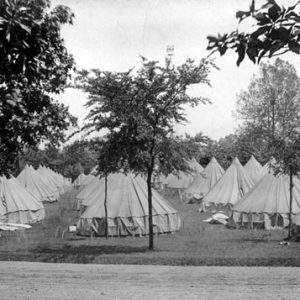 Camp Shaver
Camp Shaver 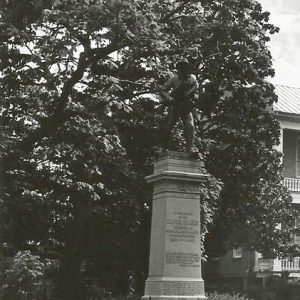 Capital Guards Memorial
Capital Guards Memorial  Capital Guards Memorial Vandalism
Capital Guards Memorial Vandalism 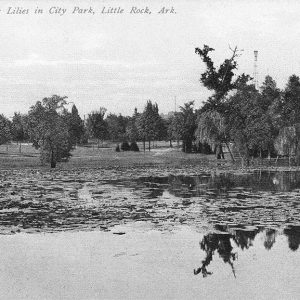 City Park; 1907
City Park; 1907  Foster Band Shell
Foster Band Shell 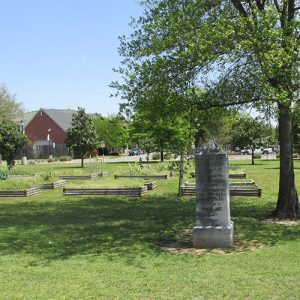 Human Dissection Monument
Human Dissection Monument  Korean War Memorial
Korean War Memorial  MacArthur Park Etching
MacArthur Park Etching 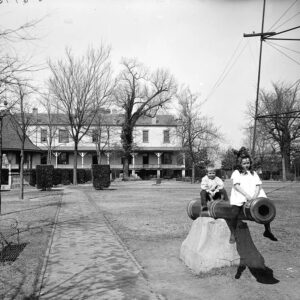 Old Barracks
Old Barracks  Theodore Roosevelt in Little Rock
Theodore Roosevelt in Little Rock 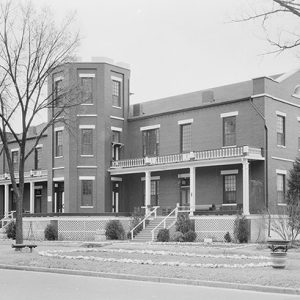 Tower Building
Tower Building 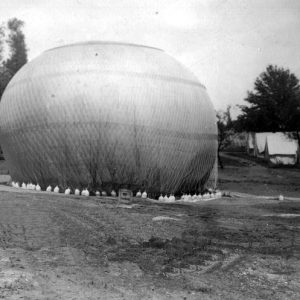 UCV Reunion Balloon
UCV Reunion Balloon 




Comments
No comments on this entry yet.